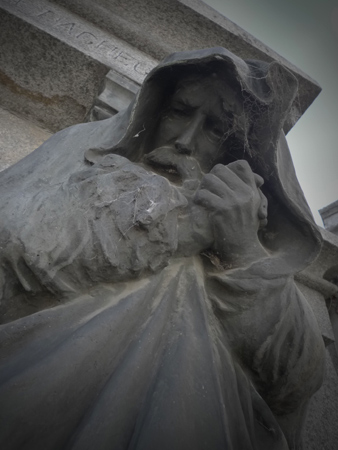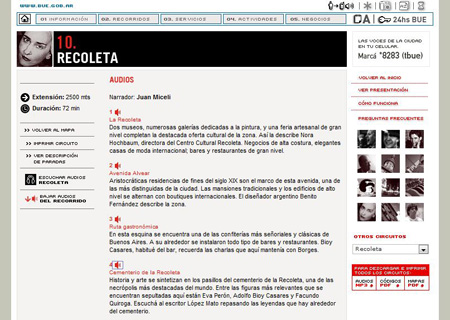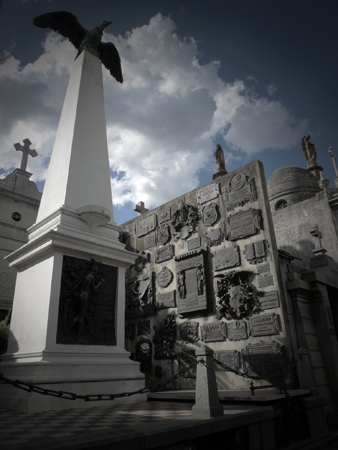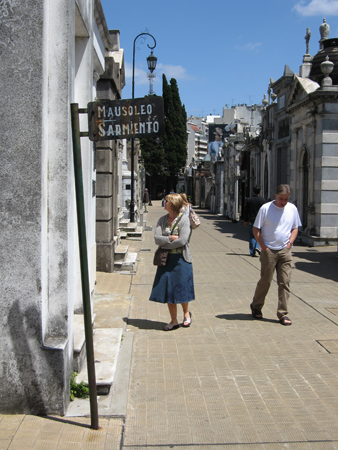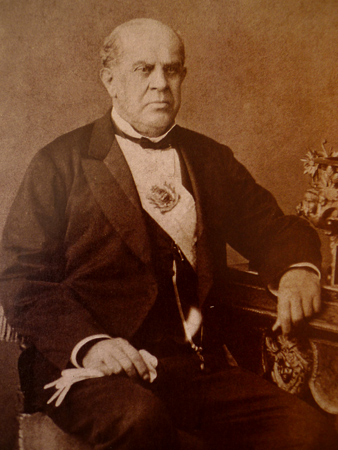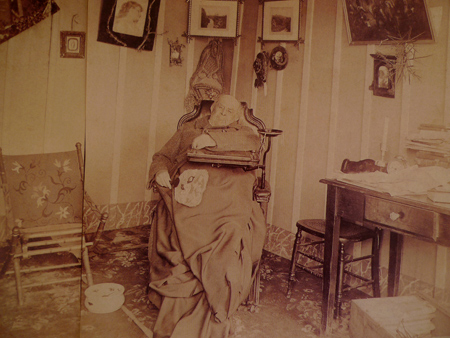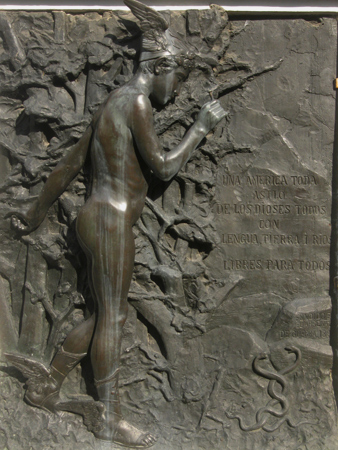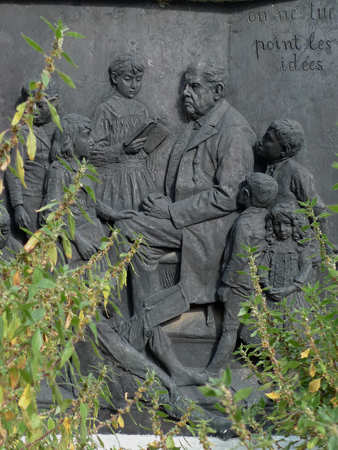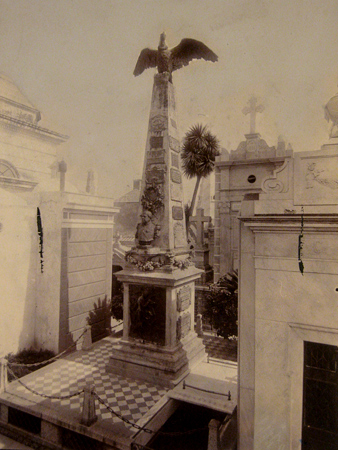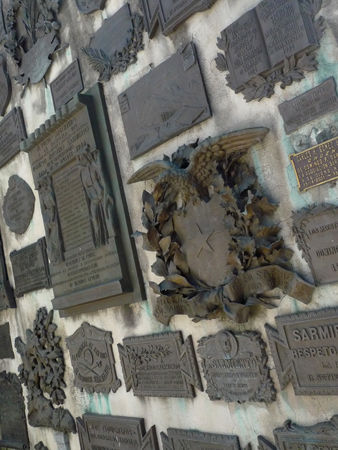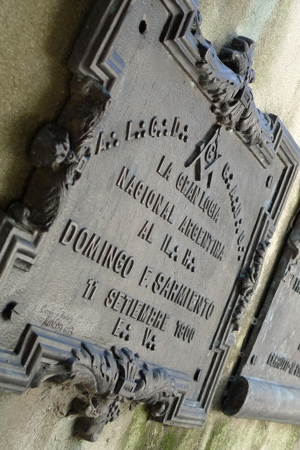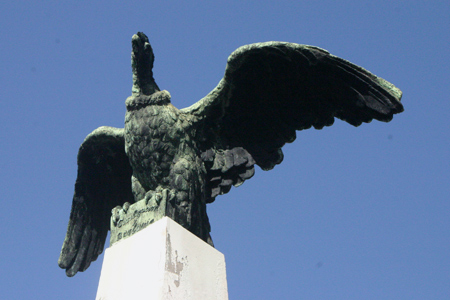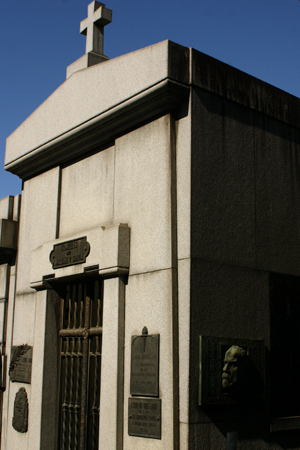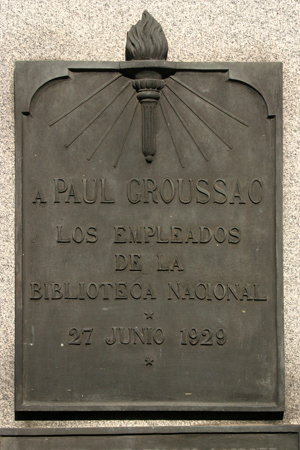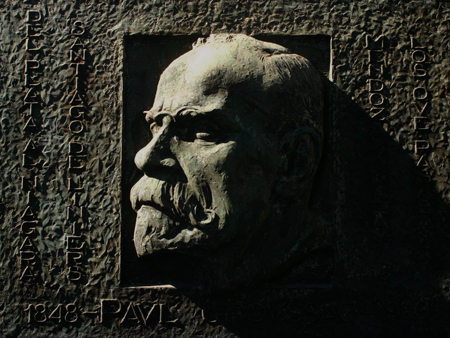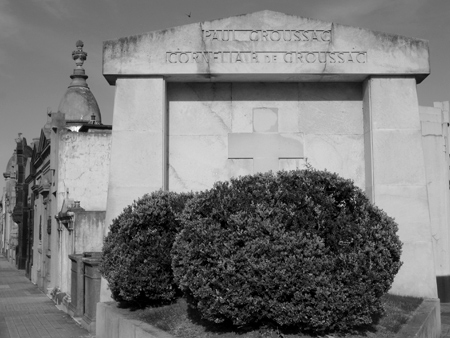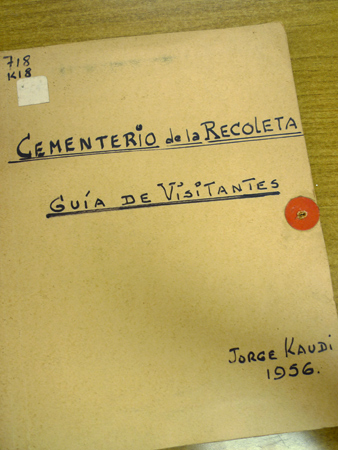
The first attempt to create a Recoleta Cemetery guidebook appeared in 1955, ten years after a few tombs were declared historic monuments by the national heritage association. Author Jorge Kaudi worked in the mausoleum business & assembled several lists of noteworthy tombs in Recoleta Cemetery. His goal was to generate interest in a larger, more scholarly project to be used by school teachers… teachers who would ultimately use the cemetery as a big, outdoor classroom for teaching art, architecture & national history. Very cool.
Kaudi’s hopes that the Ministry of Education would continue his project never came to fruition. But his efforts led to a mention in local newspapers & generated demand for new copies of the list. The one appearing in this post was typed by Kaudi in 1956, signed & donated to the library of the Museo de Arte Popular-José Hernández. Apparently it’s the only original left in any of the city’s libraries:
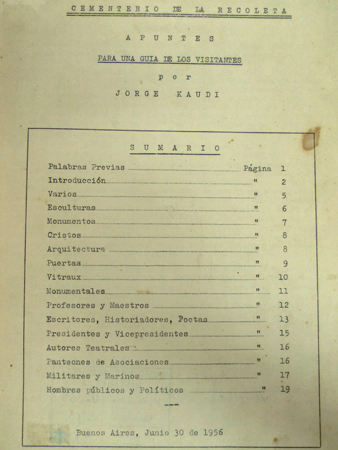
Kaudi recognized the difficulty of designing a cemetery guidebook since passageways inside have no names. Providing written directions to specific loactions is impossible, so he chose to use the cemetery’s official location system instead. Kaudi created categories & listed several entries under each:
-
- Various (people not in Recoleta Cemetery) • 12
-
- Sculptures • 47
-
- Monuments • 42
-
- Images of Christ • 10
-
- Architecture • 39
-
- Doors • 23
-
- Stained glass •16
-
- Monumental works • 56
-
- Professors & teachers • 61
-
- Writers, historians, poets • 60
-
- Presidents & Vice-Presidents • 23
-
- Playwrights • 17
-
- Pantheons for associations • 15
-
- Army & Navy personnel • 108
-
- Public figures & politicians • 60
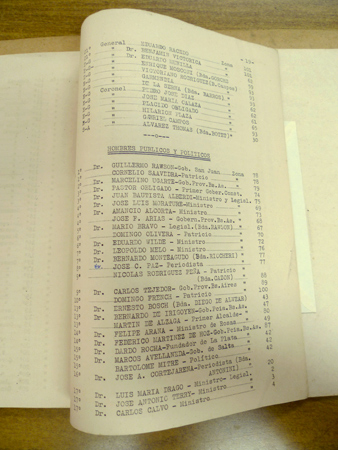
Fairly extensive (the entire document is 20 pages), the list is an incredible effort for the post-Perón era. But the most interesting section is the introduction, where Kaudi makes a series of observations concerning tourism in Recoleta Cemetery:
As I mentioned before, no guidebook exists for Recoleta Cemetery, not even a bad one. All the artistic treasure it contains, which constitute its rich historical & cultural heritage, remains ignored by many people who visit it.
American & English tourism companies classify this cemetery as monumental & very worthy of being visited. For that reason, one of the first sites for tourists to see in the city of Buenos Aires is this cemetery. Guided by translators who must fulfill their duty according to rigid schedules, [they] abbreviate its visit, barely arriving to the monument to Dr. Carlos Pelligrini situated 100 meters from the entrance.
With little exception, visitors do not make contact with the exciting reality of our history due to the lack of knowledgable guides who do not know our past history, its most glorious traditions, or its valued forefathers. Without doubt, those who should praise our past & take real pride in extolling the virtures of our founders unfortunately fail. And worse, along with this ignorance of history, there are single-minded guides who ignore artistic & esthetic topics… all of which demonstrate the sad fact that they cannot explain to visitors knowledge they do not possess. Tourists return to their own countries without a good art & history lesson… something that anyone has a right to experience who visits a country with interest to see & appreciate something that tourist agencies claim worthy of admiration.
Kaudi cuts right to the point… he could be talking about today! At least a couple of books about Recoleta Cemetery exist today (we will release our own guidebook soon), & there are a few good tour guides. Hopefully this blog fulfills some of what Kaudi considered appropriate over 50 years ago.
Update (18 May 2011): Wandering through the cemetery in Mar 2011, I stumbled upon a mausoleum designed by Jorge Kaudi. The burial place of J. Rodolfo Bernasconi y Familia deserves a post of its own, but this proves there is always something to discover in Recoleta Cemetery:
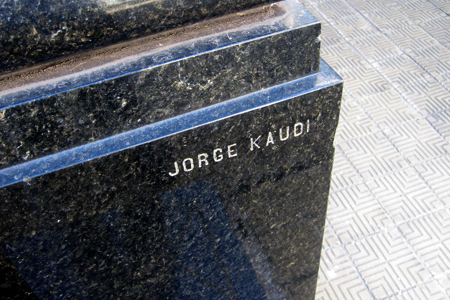
Update (20 Feb 2024): Fourteen years after my original discovery, a group of three researchers found additional information about Kaudi & republished his original work. Marcelo wrote about their journey in this post.
Leave a Comment